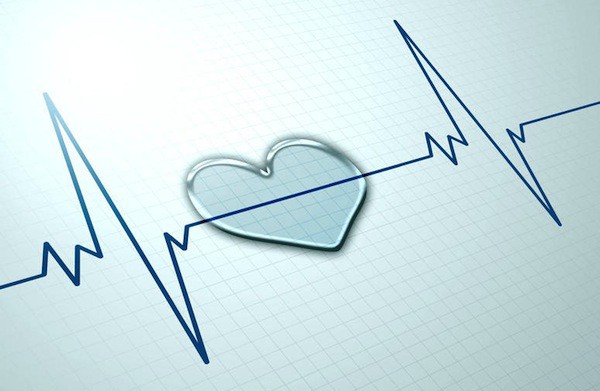Lara Pizzorno is the author of “Your Bones: How You Can Prevent Osteoporosis and Have Strong Bones for Life – Naturally” and a member of the American Medical Writers Association with 29 years of experience specializing in bone health.
Recently we asked Lara if she would help us provide a series of short, ongoing videos to help you (our customers and readers) stay up to date on the latest facts and science related to bone health.
In this latest video, Lara discusses the two different types of vitamin K2 and why you need each. Watch the video below (or read the transcript provided) and let us know what you think in the comments. 🙂
Very briefly, K1 has powerful anti-inflammatory actions.
When you get too little K1 from your diet, your inflammation goes up, and anything that promotes inflammation will also lead to excessive osteoclast activation and bone loss. Remember, the osteoclasts are the specialized cells in our bodies that break down old bone so that it can be replaced with new bone. But when they get activated too frequently, we lose too much bone to replace it quickly enough.
Too little K1 will result in inflammation occurring in your body, and when your body is inflamed, even a chronic low grade inflammation, your osteoclasts are activated and this promotes bone loss. Both Vitamin K1 and K2 are the co-factors for very different but very important enzymes. Without K1 and K2 inserted into these enzymes, they don’t work, and when they don’t work they’re unable to activate some very important proteins. So those don’t work either.
The biochemistry is pretty complicated, but you don’t have to know all the steps involved to understand that:
- Vitamin K1 is required to activate the proteins better involved in blood clotting,
- and Vitamin K2 is required to activate the proteins that determine where calcium goes in our bodies, making sure that the calcium we absorb goes into our bones where we want it and not into our arteries or our hearts where we don’t. That’s the job of the proteins activated by K2.
One of these proteins called osteocalcin pulls calcium into our bones and another called matrix-Gla protein actively prevents calcium from depositing in soft tissues, not only our arterie s and hearts but our kidneys, breasts, and brain where we certainly don’t want calcium deposits. The latest research is actually even showing on its animal studies still, but it’s showing, that Vitamin K2 can even remove calcium that is already deposited in the cardiovascular system. So too little K2 can result in calcium depositing where we don’t want it in soft tissue, like our blood vessels instead of in our bones.
s and hearts but our kidneys, breasts, and brain where we certainly don’t want calcium deposits. The latest research is actually even showing on its animal studies still, but it’s showing, that Vitamin K2 can even remove calcium that is already deposited in the cardiovascular system. So too little K2 can result in calcium depositing where we don’t want it in soft tissue, like our blood vessels instead of in our bones.
You may remember back in 2011 hearing results from an analysis of the data from the Women’s Health Initiative study that taking calcium and Vitamin D might actually even increase your risk for having a heart attack.
When this paper was published, it initiated a press feeding frenzy, and lots of articles came out and scared a lot of us from taking enough calcium and Vitamin D that we needed to have healthy bones.
What was really going on here?
Well, we certainly have to have calcium and Vitamin D. We have to have Vitamin D to absorb the calcium. So obviously there was some other factor that was missing, and now just from listening to the few things I have explained to you about Vitamin K, you know that Vitamin K2 activates the proteins that are responsible for regulating where calcium goes, putting it into bone and preventing it from depositing in our hearts or arteries. So you, unlike the doctors who conducted this study, can probably figure out what was wrong.
The women in this study were not taking Vitamin K2, they were only taking calcium and Vitamin D.
So the calcium that they were absorbing was not being regulated into where it was going. It’s not surprising that it could have caused problems.
Not only does Vitamin K2 regulate where calcium goes in your body, but Vitamin K2 and Vitamin D work together, they’re a team.
Vitamin D increases both our body’s ability to absorb calcium, and at the same time Vitamin D also increases our body’s production of Vitamin K dependent proteins, osteocalcin and matrix-Gla protein. Osteocalcin which puts calcium when we want it and matrix-Gla protein which keeps it out of the places where we don’t want it.
Our bodies come pre-programmed to keep us healthy. Your body knows automatically that Vitamin D will only increase your absorption of calcium but do nothing to regulate where that calcium goes. Your body knows that that is the job of Vitamin D’s partner, K2. Your body is pre-programmed for this partnership. When you take Vitamin D, your body automatically produces more of the Vitamin K dependent proteins, osteocalcin and matrix-Gla protein, so that the increased calcium you will be absorbing is going to be put in the right place.
This, however, can only happen when you provide your body, not only with calcium and Vitamin D, but with the K2 that it has to have to activate ostecalcin and matrix-Gla protein. So that’s the quick overview. To have healthy bones, we must have Vitamin K, and we need it in both its forms, K1 and K2.
In our next video we’ll start talking in detail about Vitamin K1 and all the ways in which it helps us to have healthy bones. And we’ll also discuss what happens when we don’t get enough Vitamin K1. Thanks for tuning in. I hope this has been helpful for you.
Sources:
El Asmar MS, Naoum JJ, Arbid EJ. Vitamin k dependent proteins and the role of vitamin k2 in the modulation of vascular calcification: a review. Oman Med J. 2014 May;29(3):172-7. doi: 10.5001/omj.2014.44. PMID: 24936265
Flore R, Ponziani FR, Di Rienzo TA, et al. Something more to say about calcium homeostasis: the role of vitamin K2 in vascular calcification and osteoporosis. Eur Rev Med Pharmacol Sci. 2013 Sep;17(18):2433-40. PMID: 24089220
Theuwissen E, Smit E, Vermeer C. The role of vitamin K in soft-tissue calcification. Adv Nutr. 2012 Mar 1;3(2):166-73. doi: 10.3945/an.111.001628. PMID: 22516724
Schurgers LJ, Uitto J, Reutelingsperger CP. Vitamin K-dependent carboxylation of matrix Gla-protein: a crucial switch to control ectopic mineralization. Trends Mol Med. 2013 Apr;19(4):217-26. doi: 10.1016/j.molmed.2012.12.008. Epub 2013 Jan 30. PMID: 23375872
Dalmeijer GW, van der Schouw YT, Vermeer C, Magdeleyns EJ, Schurgers LJ, Beulens JW. Circulating matrix Gla protein is associated with coronary artery calcification and vitamin K status in healthy women. J Nutr Biochem. 2013 Apr;24(4):624-8. doi: 10.1016/j.jnutbio.2012.02.012. Epub 2012 Jul 20. PMID: 22819559
van den Heuvel EG, van Schoor NM, Lips P, Magdeleyns EJ, Deeg DJ, Vermeer C, den Heijer M. Circulating uncarboxylated matrix Gla protein, a marker of vitamin K status, as a risk factor of cardiovascular disease. Maturitas. 2014 Feb;77(2):137-41. doi: 10.1016/j.maturitas.2013.10.008. Epub 2013 Oct 24. PMID: 24210635
Westenfeld R, Krueger T, Schlieper G, Cranenburg EC, Magdeleyns EJ, Heidenreich S, Holzmann S, Vermeer C, Jahnen-Dechent W, Ketteler M, Floege J, Schurgers LJ. Effect of vitamin K2 supplementation on functional vitamin K deficiency in hemodialysis patients: a randomized trial. Am J Kidney Dis. 2012 Feb;59(2):186-95. doi: 10.1053/j.ajkd.2011.10.041. Epub 2011 Dec 9. PMID: 22169620
Fusaro M, D’Angelo A, Gallieni M. Consequences of vitamin K2 deficiency in hemodialysis patients. Am J Kidney Dis. 2012 Jul;60(1):169. doi: 10.1053/j.ajkd.2012.03.021. PMID: 22709599
Bolland MJ, Grey A, Avenell A, et al. Calcium supplements with or without vitamin D and risk of cardiovascular events: reanalysis of the Women’s Health Initiative limited access dataset and meta-analysis. BMJ. 2011 Apr 19;342:d2040. doi: 10.1136/bmj.d2040. PMID: 21505219
Masterjohn C .Vitamin D toxicity redefined: vitamin K and the molecular mechanism. Med Hypotheses. 2007;68(5):1026-34. Epub 2006 Dec 4. PMID: 17145139





Rachel Bossie
September 22, 2015 , 7:05 amGreat introduction to Vitamin K and spoken clearly in understanding terms; very informational. Thank you.